A Definitive Guide to Flooring
Choosing the right flooring for your home can feel overwhelming with so many options available. Flooring choice can even depend on the space where you are installing it. What you use in a bathroom may be different than what you use in a living room. It’s essential to understand the benefits and drawbacks of each type to make an informed decision. Below is our guide to the most popular types of flooring and which rooms are best for using them in.
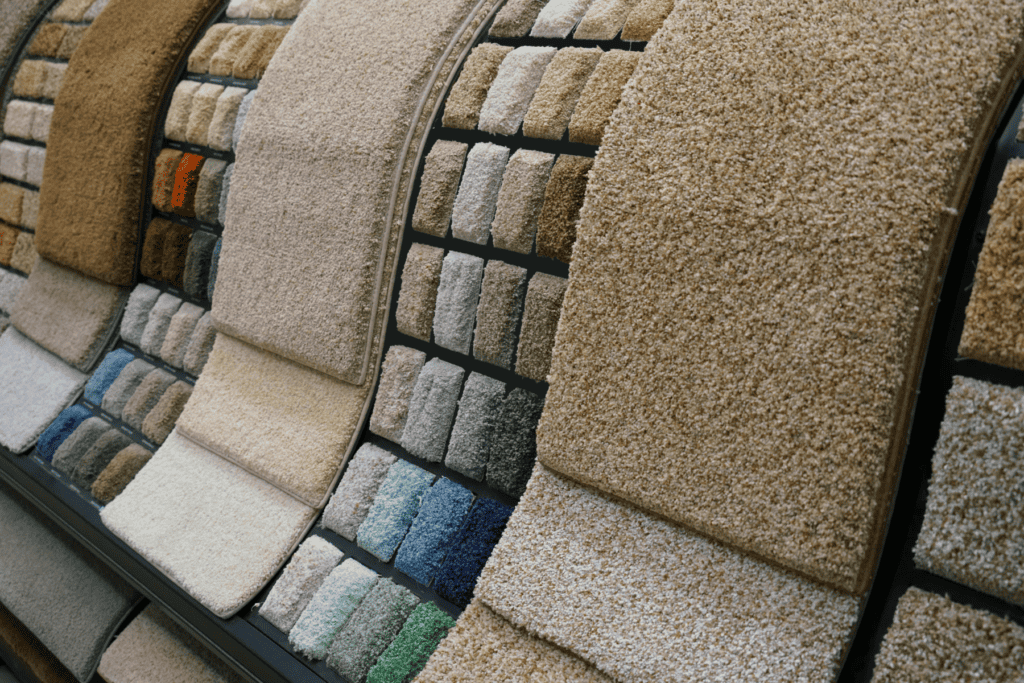
Carpet
Carpet is a favorite for many homeowners due to its soft, warm feel, making it ideal for bedrooms and living rooms where comfort is a priority. It provides excellent thermal insulation, which can help reduce energy bills by keeping your home warmer during the colder months. Additionally, carpet excels in noise reduction, making it a suitable choice for upstairs rooms and multi-level homes. With a vast array of colors, textures, and patterns, you can easily find a carpet that complements your decor.
However, carpet does come with some downsides. It can be challenging to clean and often requires regular vacuuming and professional cleaning to maintain its appearance. Carpet tends to trap dust, pet dander, and other allergens, which can be problematic for those with allergies. It also wears out faster than other flooring types, particularly in high-traffic areas, and is susceptible to staining, making it less ideal for households with pets or small children.
Best places to use carpet: Bedrooms, living room, basement rec room, and stairs.
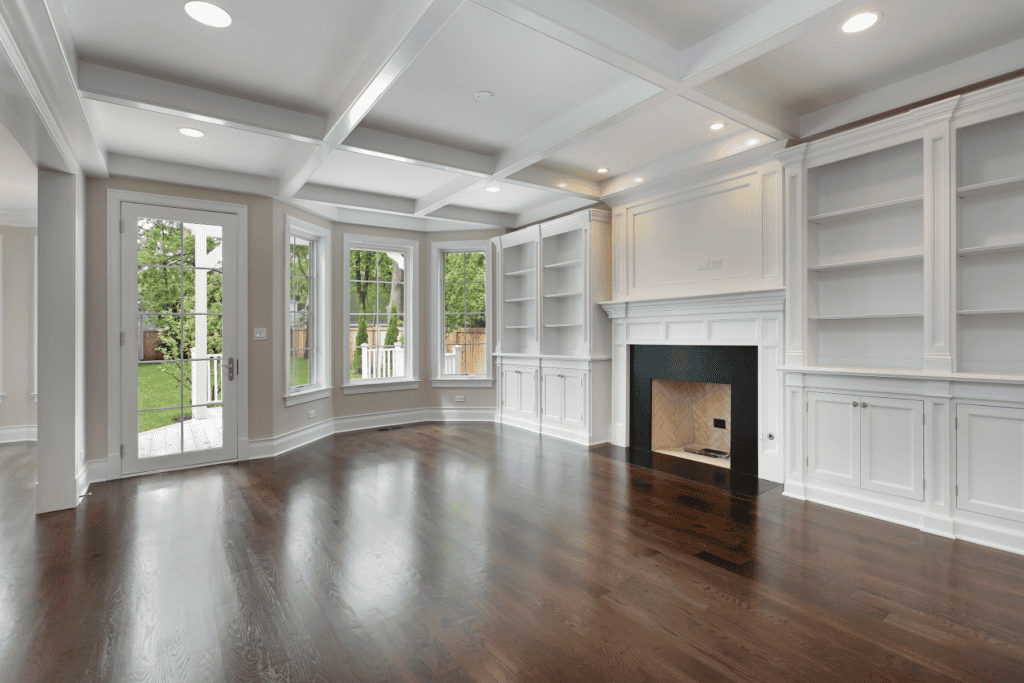
Hardwood
Hardwood flooring offers a timeless, elegant look that can significantly enhance the value of your home. High-quality hardwood is incredibly durable and can last for decades with proper care. It’s also relatively easy to clean with regular sweeping and occasional mopping. Moreover, hardwood is a hypoallergenic option as it doesn’t trap dust and allergens like carpet does.
On the downside, hardwood flooring can be quite expensive to purchase and install. It requires regular maintenance, including refinishing every few years to keep it looking pristine. Hardwood is sensitive to moisture and can warp or become damaged if exposed to excessive water, making it less ideal for kitchens and bathrooms. Additionally, it can be noisy underfoot, especially in multi-level homes.
Best places to use hardwood flooring: Bedrooms, living room, stairs, and hallways.
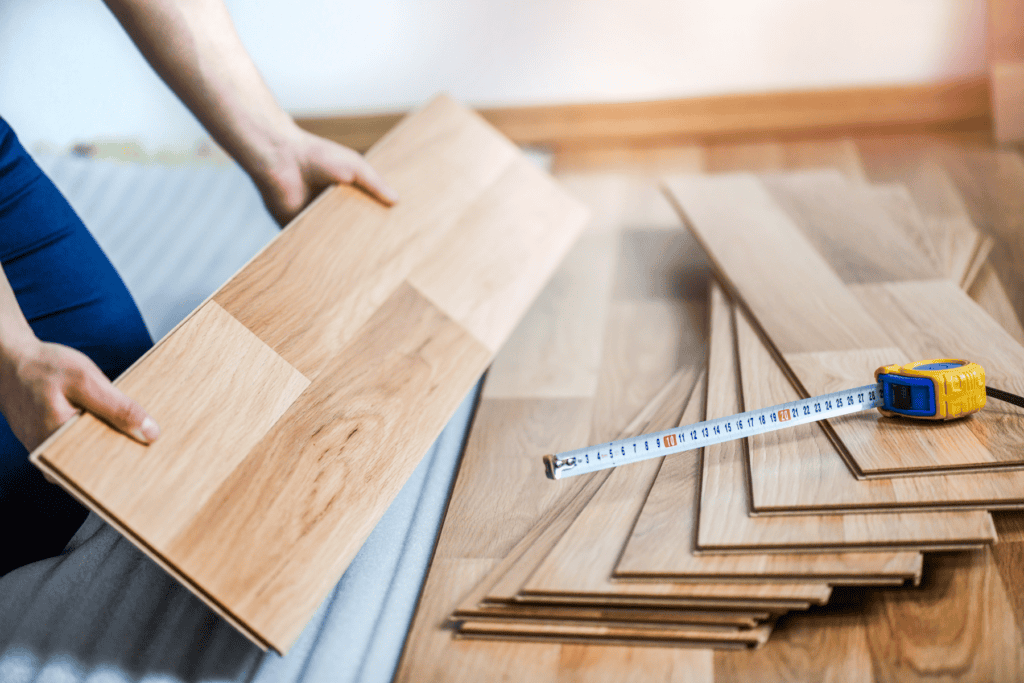
Laminate
Laminate flooring is an excellent choice if you’re looking for an affordable alternative to hardwood that still offers a similar appearance. It is resistant to scratches and wear, making it suitable for high-traffic areas. Many laminate floors feature a click-and-lock installation system, making it a popular choice for DIY enthusiasts. Additionally, laminate is easy to clean with regular sweeping and occasional mopping.
However, laminate shares some of hardwood’s drawbacks, particularly its sensitivity to moisture. While it can mimic the look of hardwood, it may not have the same warmth and feel. Laminate might not add as much value to your home as real hardwood and can be challenging to repair if damaged; often, the entire floor needs to be replaced.
Best places to use laminate flooring: Living room, bedrooms, hallways, stairs, and entryways.
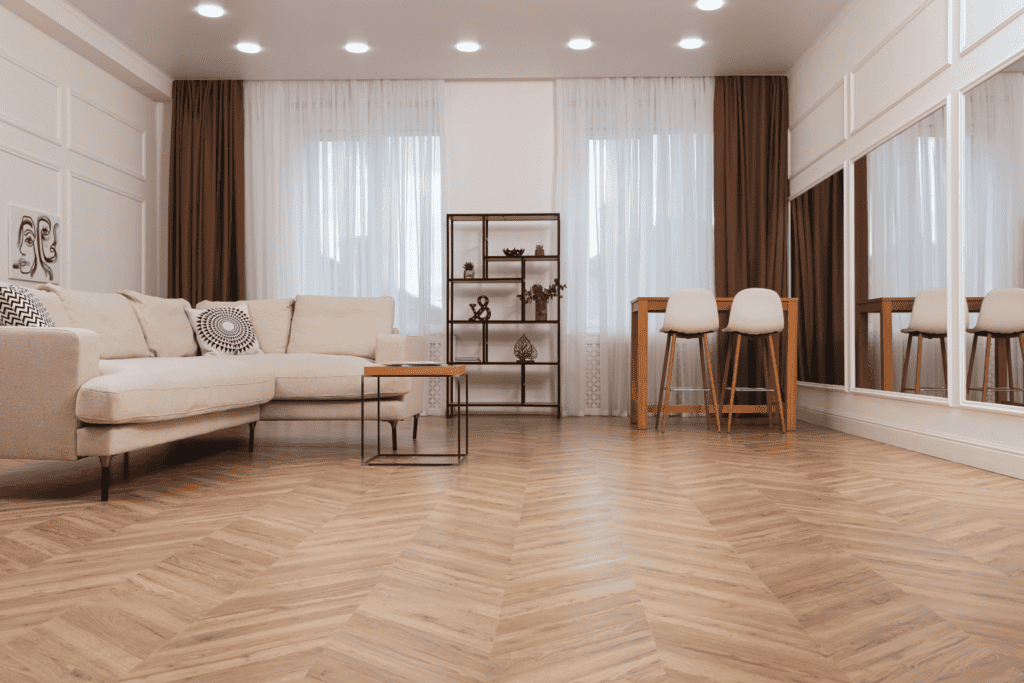
Vinyl
Vinyl flooring is highly resistant to water, making it an excellent choice for kitchens, bathrooms, and basements. It’s durable, can withstand heavy traffic, and is resistant to scratches and stains. Vinyl also offers more comfort underfoot compared to tile or hardwood, providing a bit of cushioning. Available in a wide range of styles, including designs that mimic wood and stone, vinyl can suit various aesthetic preferences.
However, vinyl flooring may not have the high-end look of natural materials like hardwood or stone. It is made from synthetic materials and can off-gas volatile organic compounds (VOCs), which might be a concern for some homeowners. Additionally, vinyl may not add as much value to your home compared to hardwood or tile and is difficult to repair if it gets damaged; often, the entire section needs to be replaced.
Best places to use vinyl flooring: Kitchen, living room, bedrooms, bathroom, living room, mudrooms, and laundry room.
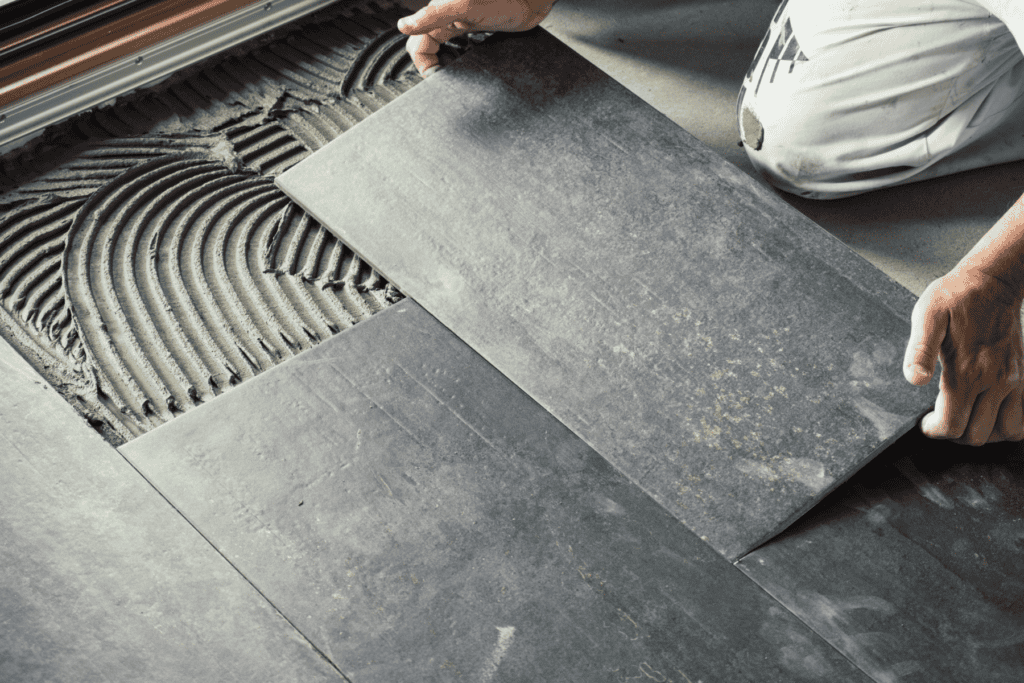
Tile
Tile flooring is known for its durability and longevity, often lasting for decades with proper care. It’s ideal for areas prone to moisture, such as bathrooms and kitchens. With a vast range of colors, styles, and patterns available, tile offers endless possibilities for creative designs. Furthermore, tile is easy to clean and maintain, requiring only regular sweeping and mopping.
Nevertheless, tile can be cold underfoot, which might not be comfortable in cooler climates. It is also hard and unforgiving, which can be tough on your feet and potentially dangerous if you fall. High-quality tile can be expensive, and professional installation is often required. Additionally, grout lines can become stained and require regular cleaning and sealing to keep them looking fresh. It can also chip and crack over it’s lifespan and be a hassle to replace if it needs to be.
Best places to use tile flooring: Bathroom, Kitchen, Entryway, Laundry room, and outdoor patios.
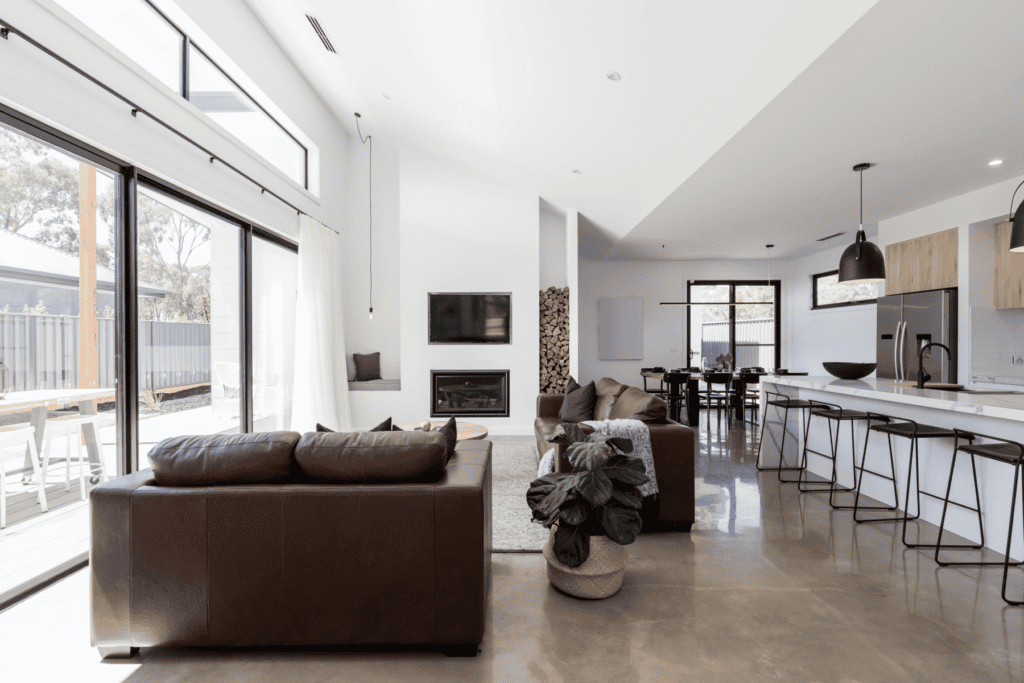
Concrete
Concrete flooring has gained popularity for its modern, industrial aesthetic and versatility. It is incredibly durable and can withstand heavy traffic, making it suitable for both residential and commercial spaces. Concrete floors are easy to clean and maintain, often requiring just regular sweeping and occasional mopping. They can be customized with various finishes, stains, and textures to achieve a range of looks, from sleek and polished to rustic and textured. Additionally, concrete is an excellent conductor of radiant heating, providing a warm and comfortable surface in colder climates.
However, concrete floors can be hard and unforgiving, which might not be comfortable for long periods of standing. They can also be cold underfoot without radiant heating, which might not be ideal for all climates. While concrete is durable, it can crack over time due to settling or temperature changes. The installation and finishing processes can be complex and may require professional expertise, adding to the overall cost. Lastly, without proper sealing, concrete can be porous and susceptible to stains.
Best places to use concrete flooring: basements, living areas, bathroom, mudroom, and workshop.
Conclusion
Each type of flooring has its unique set of advantages and disadvantages. The best choice for your home depends on your specific needs, budget, and lifestyle. Whether you prioritize comfort, durability, aesthetics, or maintenance, there’s a flooring option out there that’s perfect for you. By carefully considering the pros and cons, you can make an informed decision that you’ll be happy with for years to come.
If you’re looking to replace a floor, we have experts who can help you decide the best option for you or install a floor. You can find options for any home project you may have on our Preferred Vendors page!

